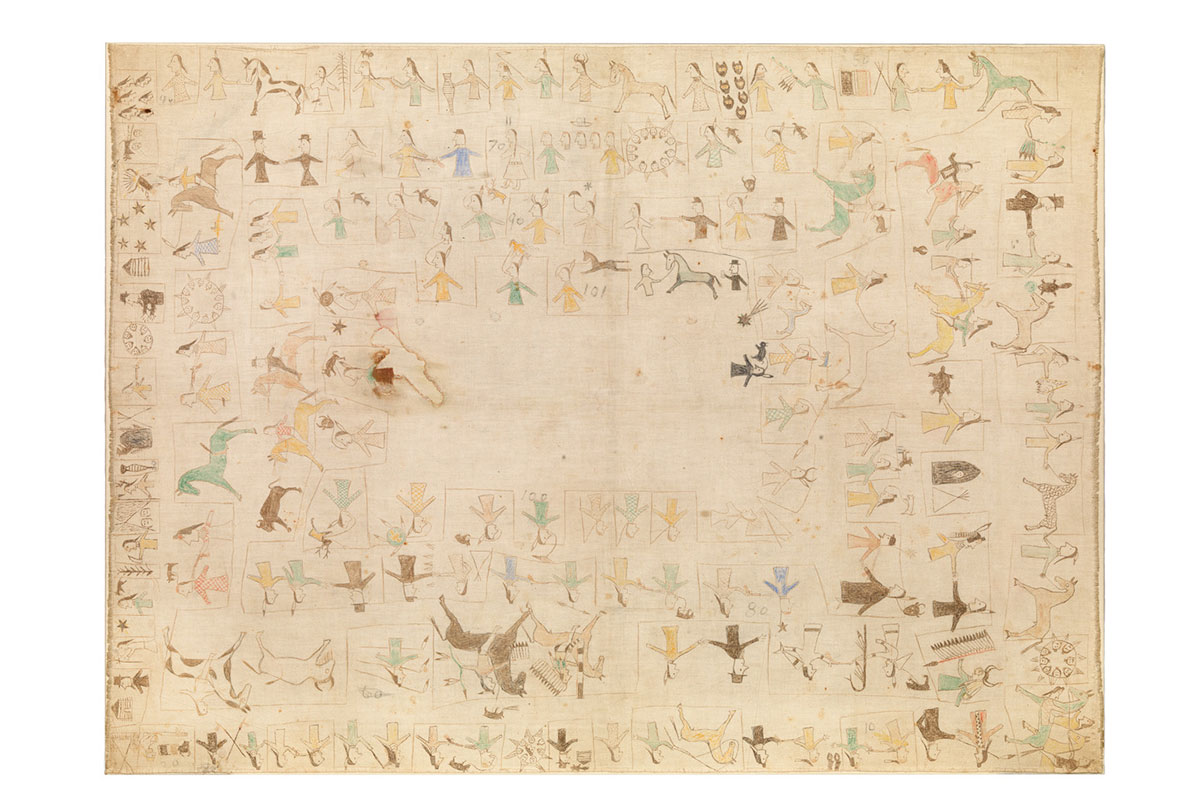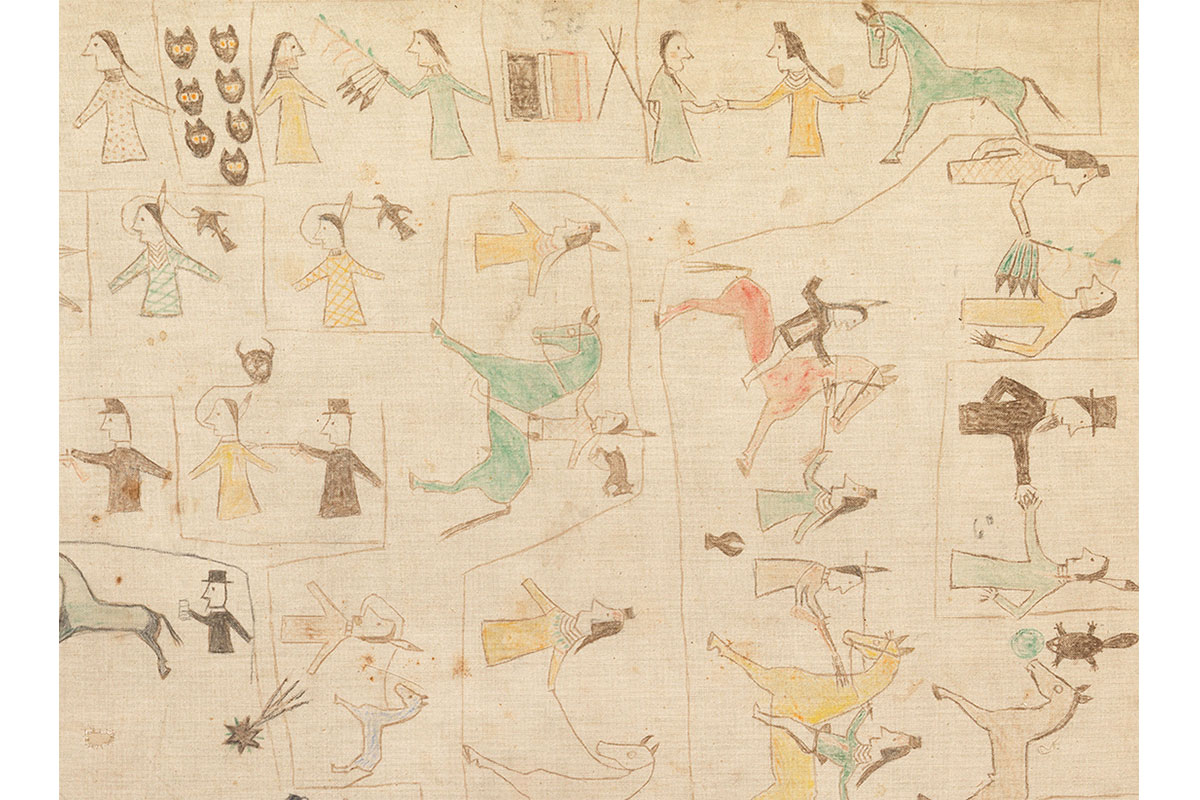Winter Count
Hunkpapa Lakota
Northern Plains
ca. 1900
muslin, paint
height: 35 ¼"
width: 47 ¾"
Inventory # P4350
Sold
A small stain removed and repaired left side, center facing.
PROVENANCE
Acquired directly from the artist by Mr P Robinson who owned a general store near Williston, ND, in the early 1900's
By descent in the family
RELATED EXAMPLES
Historical Society of North Dakota, Bismarck, Cat. Nos. 674 and 791 – See: McCoy, Ron. American Indian Art Magazine, Summer 1994, pg. 71, pl. 4, pg. 73, pl. 6, and pg. 74, pl. 7 (catalogued together as 791)
And also Maurer, Evan, M. Visions of the People: A Pictorial History of Plains Indian Life. Minneapolis: Minneapolis Institute of Arts, 1992, pg. 275, pl. 286 (Cat. No. 791)
Cranbrook Institute of Science, Bloomfield Hills, Michigan, Cat. No 4145 – See: See: McCoy, Ron. American Indian Art Magazine, Summer 1994, pg. 71, pl. 3
Metropolitan Museum of Art - The Charles and Valerie Diker collection – See: Ibid, pg. 68, pl. 1 and pg. 69, pl. 2 for two ledger drawings by Swift Dog
Ibid, pg. 72, pl. 5 for a modal tipi cover (private collection)
The Nelson-Atkins Museum of Art, Kansas City, MO. (Ex. Terasaki Collection), Cat. No. 2005.30 – See: https://art.nelson-atkins.org/objects/35059/winter-count?ctx=1e9b3c6d-7996-4043-8560-3261a7c8c637&idx=1507
Winter Counts, or waniyetu wowapi, are pictorial calendars employed by many Indigenous Plains peoples, including the Lakota, Blackfeet, Kiowa and Mandan. In contrast to Ledger Drawings, which display the personal deeds of their respective owners, Winter Counts record communal histories of extended families. Each glyph represents a specific event by which an entire year is recorded. Chosen by a group of elders, the event was rendered in pictographic form by the Keeper of the Count. Both artist and historian, he would have chosen an appropriate format and medium for the Winter Count, and it was his responsibility to relay the stories represented to others. In this way, Winter Counts served as memory aids for their Keeper, capturing the events, values and beliefs deemed worthy to be passed on.
The present Winter Count was created by Hunkpapa Lakota warrior artist and historian Ta Sunka Duza (Swift Dog, 1845-1918). Each glyph is framed by a rectangle organized as an inward-turning spiral. The subject matter ranges from particular individuals identified by name glyphs to neighbouring groups distinguished by characteristic features such as hair style. A glyph comprised of five stars in the top left corner likely represents the Leonid meteor storm that took place November 13,1833. Also known as ‘the year the stars fell,’ the magnificent meteor shower appears on almost all Winter Counts from the period.
Ta Sunka Duza was a key informant to the ethnologist Frances Densmore who worked for the Smithsonian Institution in the early 20th century. Through her writings we know much about the artist’s life and work. The son of Chief Running Fearlessly, Ta Sunka Duza is associated with at least five Winter Counts, with one strikingly similar example found in the collection of the State Historical Society of North Dakota (Cat. 791). He also created painted tipi covers and a number of superb Ledger Drawings from his own warring exploits in the 1860s and 70s.









